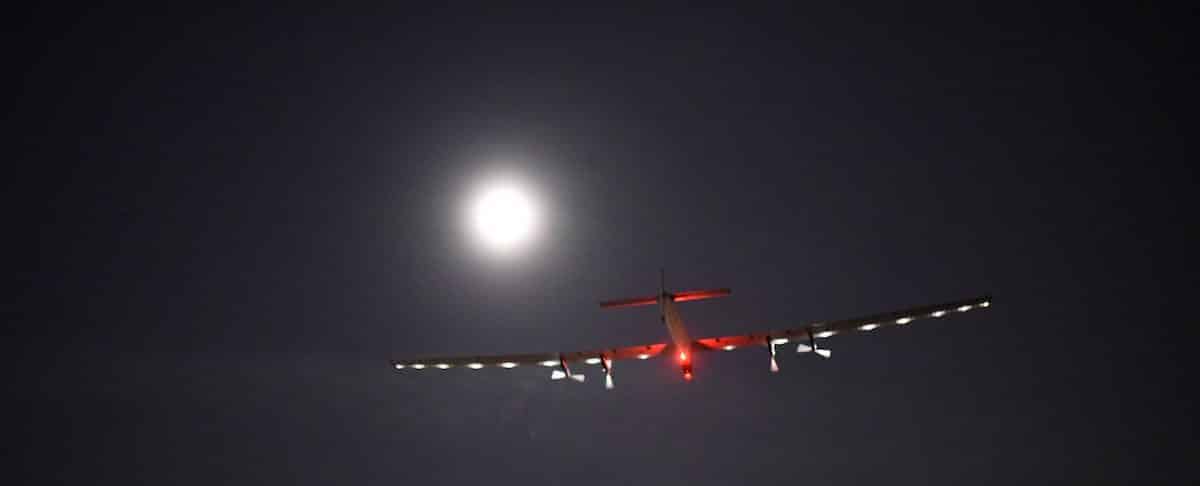
By Anne Perusek, SWE Director of Editorial and Publications

Standing on the tarmac in Dayton, Ohio — hometown of Wilbur and Orville Wright, who, together with their less-recognized sister, Katharine, made aviation history with the first successful airplane flight — I was part of a select group welcoming Solar Impulse 2. On this spring night, complete with a blue moon and cloudless sky, another type of history was in the making: Solar Impulse 2, the completely solar-powered plane carrying out its worldwide journey, was about to land. Witnessing this event in Dayton was to share a transformative moment in the history of aviation and technology.
Adding to the sense of history and connections to the past was the date: May 21, 2016. Aviation buffs recalled that, almost to the day 90 years earlier, on May 20, 1927, Charles Lindbergh took off for the first-ever solo flight across the Atlantic Ocean to France, an awareness expressed in murmurs as we watched Solar Impulse 2 slowly descend. LED lights spanned the enormous wingspan, and so this “plane that can fly forever without fuel” created a stunning visual. Quietly and elegantly, it landed. The reverent “oohs” and “ahs” were replaced by enthusiastic applause, and we waited patiently for the plane to be secured and for cofounder and pilot André Borschberg to descend the cockpit.
Someone held a small model of the Wright brothers’ plane, and the official welcome committee from the city included Stephen and Amanda Wright, the brothers’ great-grandniece and great-grandnephew. Solar Impulse 2 cofounder and pilot Bertrand Piccard noted that landing here was filled with emotion and symbolism, as the lives of the Wright brothers demonstrated the lives of pioneers. The story of flight, he said, was starting again with totally clean technology.
The grandniece spoke briefly, describing the experience of watching Solar Impulse 2’s descent and landing as “a string of pearls dropping out of the sky.” To that, I would add that the string of pearls was juxtaposed against a black velvet sky — exquisite.
Accompanying me was SWE Magazine contributing writer, Seabright McCabe. Following the landing, Seabright and I met Paige Kassalen, electrical engineer, the youngest and only U.S. member of the ground team. Stay tuned for Seabright’s weekly blogs chronicling our experience, and her upcoming feature on Solar Impluse 2, slated for the Fall issue of SWE Magazine.

Author
-
![Solar Impulse 2: A String of Pearls Against a Black Velvet Sky [] SWE Blog](https://alltogether.swe.org/wp-content/uploads/2021/10/swe-favicon.png)
SWE Blog provides up-to-date information and news about the Society and how our members are making a difference every day. You’ll find stories about SWE members, engineering, technology, and other STEM-related topics.






